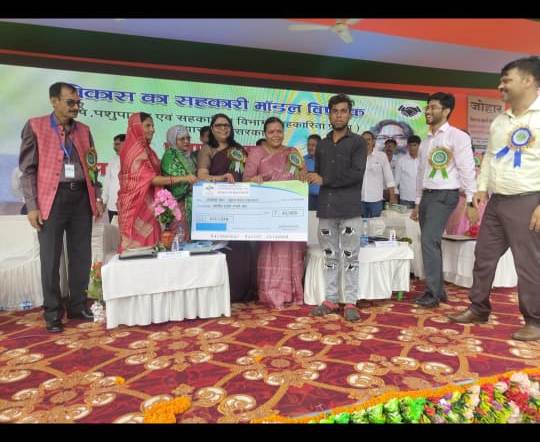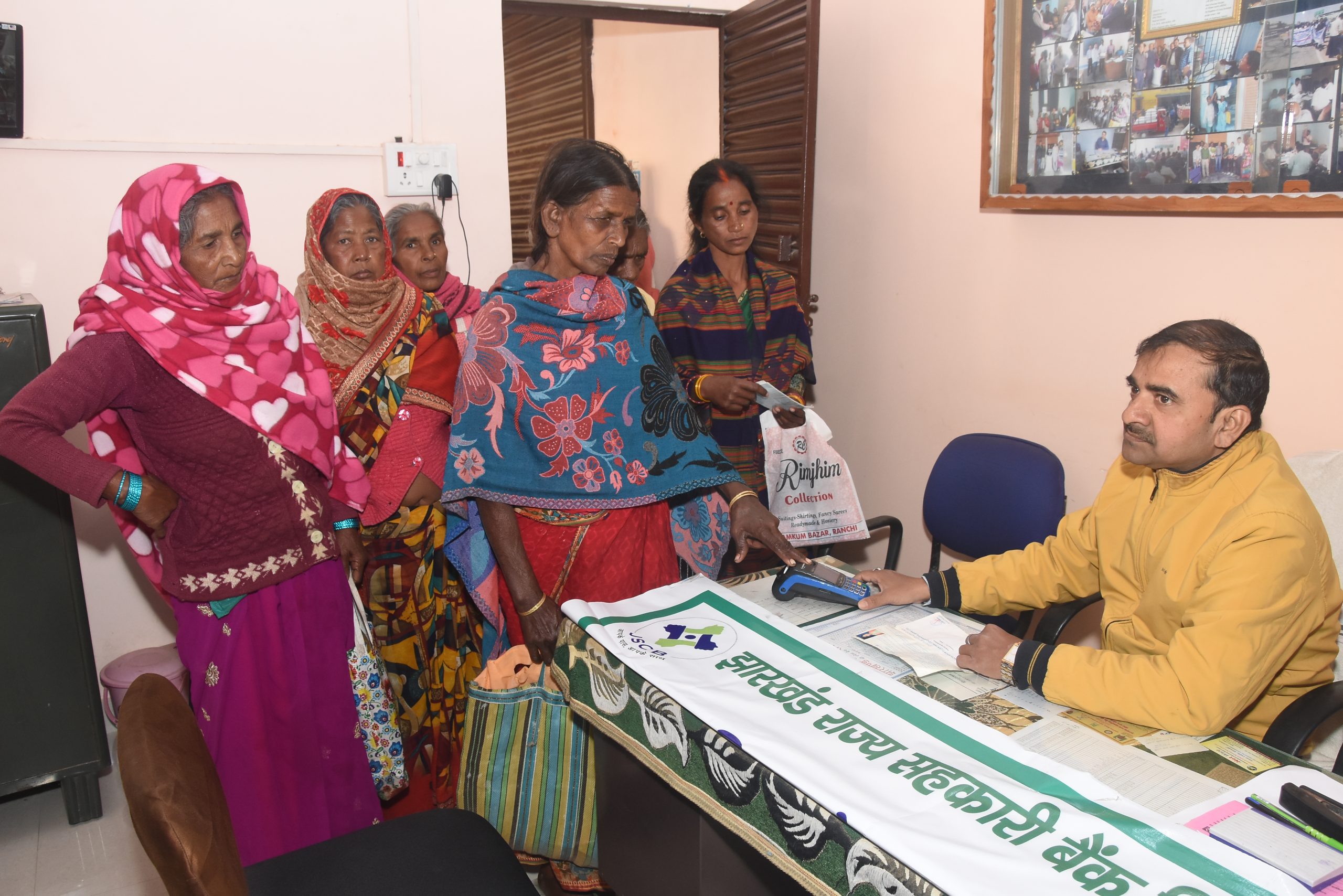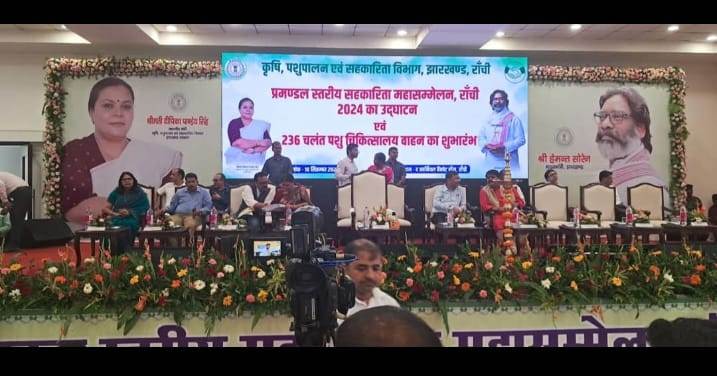Profitability of JSCB – Jharkhand State Co-operative Bank Ltd

Profitability of JSCB
Problem
- Faced internal conflicts that hindered the Bank’s functioning.
- Conflicting directives from multiple regulatory bodies.
- Low capital and high borrowing dependence.
- High Overdue Loans: Increasing overdue loans limit lending capacity.
- Struggles against commercial banks and slow tech adoption.
Solution
- Established a new Board of Directors to resolve internal conflicts and enhance decision-making.
- Implemented policies to eliminate accumulated losses by September 30, 2024.
- Focused on substantial growth in loans and mobilization of low-cost deposits.
- Secured concessional refinance from NABARD to boost lending capabilities.
- The Bank introduced agricultural loans at zero percent interest to support farmers.
Challenges
- Regulatory compliance with the Banking Regulation Act also presented hurdles.
- Furthermore, ensuring adequate capital and financial stability in a newly formed bank were critical challenges.
- Required careful navigation by the management and stakeholders involved in the project.
- Merging multiple DCCBs into a single entity posed operational difficulties.
- Harmonizing different management practices, systems, and cultures.
Innovation
- The Jharkhand State Cooperative Bank (JStCB) has introduced several innovations aimed at enhancing its operations and services.
- One notable innovation is the implementation of a digital banking platform.
- Facilitates online banking services, making it easier for customers to access their accounts and conduct transactions remotely.
- Additionally, the bank has focused on mobile banking solutions to improve accessibility for rural populations.
- Promote financial inclusion.
Outcomes
- Eliminated accumulated losses, achieving a profit of ₹66.68 crore by FY 2022-23.
- Reduced Gross NPA from 52% to 9% and Net NPA from 20% to 3%.
- Increased total loans and advances from ₹288 crore to ₹1,111 crore.
- Raised CASA deposit ratio from 54% to 60%.
- Boosted total investments from ₹1,533 crore to ₹2,132 crore, enhancing interest income.
SKOCH Award Nominee
Category: Banks
Sub-Category: Corporate Excellence – Turnaround of the Year
Project: Profitability of JSCB
Start Date: 3-27-2023
Organisation: Jharkhand State Co-operative Bank Ltd
Respondent: Bibha Singh
http://jscb.gov.in/
Level: BFSI – 4
Video
See Presentation
Gallery
Case Study
Revitalizing Profitability at Jharkhand State Co-operative Bank Ltd.
Introduction
The Jharkhand State Co-operative Bank Ltd. (JSCB), a key financial institution in Jharkhand, faced a dire financial crisis as of 31st March 2023. With accumulated losses amounting to ₹88.77 crores and several operational inefficiencies, the bank risked becoming unviable in a competitive market. Under the leadership of Chairperson Ms. Bibha Singh and the operational guidance of CEO Mr. Brajeshwar Nath, JSCB embarked on an ambitious turnaround project starting 27th March 2023. This case study explores the challenges, strategic interventions, implementation process, and remarkable outcomes of the project.
Context and Challenges
JSCB’s financial troubles were deeply rooted in years of operational challenges. As a cooperative bank with the majority of its branches located in rural Jharkhand, the bank struggled to achieve profitability due to limited market opportunities, high non-performing assets (NPAs), and a low Credit-Deposit (CD) ratio. These issues culminated in significant accumulated losses and eroded stakeholder confidence. The key challenges identified were:
- Financial Losses: The bank reported an accumulated loss of ₹88.77 crores, reflecting years of operational inefficiencies.
- Low Profit Margins: Previous financial years were marked by a consistent inability to generate adequate profits.
- High NPAs: Elevated NPAs negatively impacted the bank’s bottom line and necessitated substantial provisioning.
- Low CD Ratio: The bank’s CD ratio stood at 35.74% in March 2023, falling short of NABARD’s recommended benchmarks.
- Geographical Constraints: A predominantly rural branch network limited the bank’s ability to expand into more profitable urban markets.
These challenges underscored the urgent need for a comprehensive strategy to restore financial health and operational sustainability.
Leadership and Decision-Making
The turnaround project was championed by Chairperson Ms. Bibha Singh, who assumed office in March 2023. Her leadership was instrumental in formulating a bold vision for the bank’s recovery. She prioritized wiping out the accumulated losses, increasing profitability, and adhering to regulatory benchmarks.
Ms. Singh was supported by CEO Mr. Brajeshwar Nath, who played a critical role in implementing the strategic decisions. Together, their leadership established a culture of accountability and performance-focused growth, rallying employees to contribute to the turnaround effort.
Objectives and Goals
The project set clear, measurable objectives to address the pressing challenges:
- Profitability: Wipe out accumulated losses and achieve a positive profit of ₹6 crores by September 2024.
- Improved CD Ratio: Increase the CD ratio from 35.74% to above 40% as per NABARD’s requirements.
- Reduced NPAs: Bring the Net NPA ratio below 4% by improving recovery and provisioning efforts.
These goals were aimed at not only addressing immediate financial concerns but also positioning the bank for long-term sustainability.
Strategic Interventions
To achieve these objectives, the following key strategies were implemented:
- Resource Optimization: The bank maximized the utilization of existing staff and resources. Employees were tasked with mobilizing low-cost deposits, which would help increase the bank’s net interest margin.
- High-Yield Investments: JSCB allocated funds to high-return investment avenues, ensuring that excess liquidity generated tangible returns.
- NPA Recovery Initiatives: A focused effort was made to recover dues from defaulters. This included:
- Issuing notices to borrowers, guarantors, and employers.
- Introducing a One-Time Settlement (OTS) scheme to facilitate the recovery process.
- Policy Overhauls: The leadership introduced policies aimed at minimizing operational inefficiencies and addressing revenue leakages at branch levels.
- Staff Engagement and Training: Employees were encouraged to adopt a proactive approach toward customer engagement and service delivery, particularly in rural markets.
Implementation Challenges
Despite the structured strategies, the bank encountered significant challenges during implementation:
- Market Limitations: With most branches located in rural areas, the bank faced constraints in accessing larger, urban markets with higher profit potential.
- High NPAs: Recovery efforts were time-intensive and required significant follow-up to yield results.
- Operational Risks: Risks related to market volatility, credit quality, and branch-level inefficiencies posed ongoing threats to the bank’s recovery process.
- Resource Constraints: Limited financial and human resources demanded innovative approaches to maximize output from existing capacities.
Results and Impact
The project’s outcomes exceeded expectations and delivered measurable results:
- Profitability Achieved: By 30th September 2024, JSCB wiped out its accumulated losses of ₹88.77 crores and reported a profit of ₹6 crores.
- Improved CD Ratio: The CD ratio increased to 47.03% as of 31st March 2024, exceeding the NABARD benchmark of 40%.
- Reduced NPAs: Net NPAs were reduced to 2.76% as of March 2024, a significant improvement from 3.01% in March 2023.
- Enhanced Stakeholder Confidence: The bank’s financial turnaround restored confidence among stakeholders, including customers and regulatory bodies.
Scalability and Future Plans
The successful implementation of the turnaround strategies demonstrated the potential for scalability. Chairperson Ms. Bibha Singh has outlined an ambitious goal of achieving a profit of ₹100 crores in FY 2024-25. This vision will involve replicating the successful strategies across all branches and expanding into new markets.
Reflections and Lessons Learned
The project offered valuable insights into effective financial turnaround strategies:
- Leadership Matters: Strong, decisive leadership was a cornerstone of the project’s success.
- Focus on Basics: Addressing fundamental issues such as resource optimization and NPA recovery delivered substantial results.
- Collaboration is Key: The collective efforts of decision-makers, enablers, and employees were critical to achieving the desired outcomes.
Conclusion
The turnaround of Jharkhand State Co-operative Bank Ltd. is a compelling case of resilience and strategic leadership. By addressing financial challenges head-on, JSCB transformed itself into a profitable institution, setting an example for other cooperative banks. With a clear roadmap for future growth, JSCB is well-positioned to achieve sustained success and contribute to the economic development of Jharkhand.
For more information, please contact:
Bibha Singh at chairman@jscb.gov.in
(The content on the page is provided by the Exhibitor)







